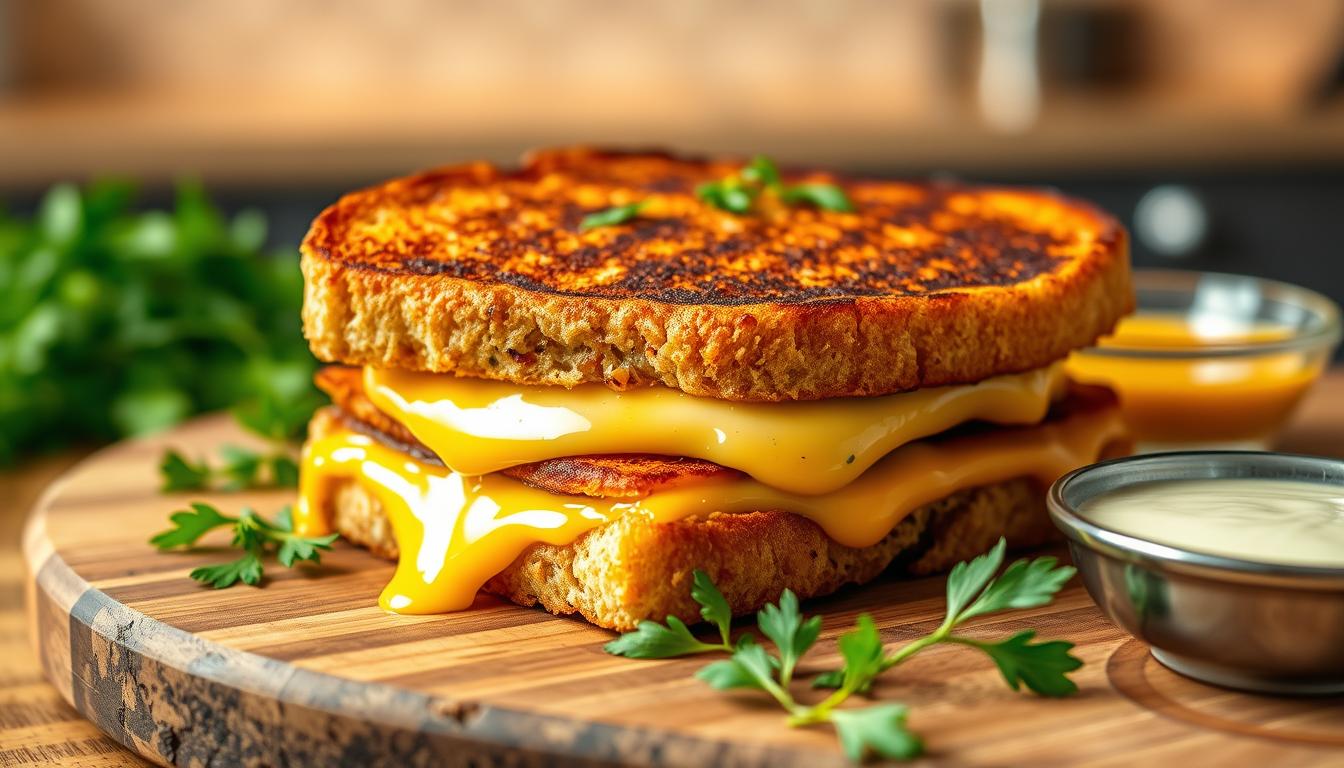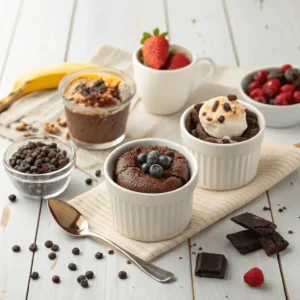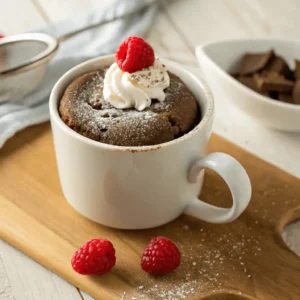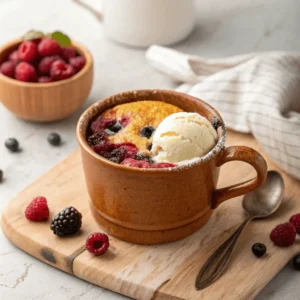Grilling cheese has become a favorite way to make outdoor cooking better. It’s great for backyard barbecues or tasty appetizers. This guide will show you the best cheeses for grilling, how to cook them perfectly, and creative ways to serve them.
Key Takeaways
- Discover the cheeses that are best suited for grilling, such as halloumi, provolone, and Mediterranean varieties.
- Learn the science behind cheese melting and why some cheeses perform better on the grill than others.
- Explore the essential equipment and step-by-step techniques for perfectly grilled cheese every time.
- Discover creative flavor combinations and serving suggestions to elevate your grilled cheese experience.
- Avoid common mistakes that can result in rubbery or stuck-on cheese, and learn proper storage and reheating methods.
Understanding the Art of Grilling Cheese
Grilling cheese is an art that needs knowledge of different cheeses. Not all cheeses melt well under heat. Learn why some cheeses are better for cheese grilling techniques and cheese melting on grill.
Types of Heat-Resistant Cheeses
For grilling cheese, pick cheeses that can handle high heat. Here are some top choices:
- Halloumi: A Cypriot cheese that keeps its shape when grilled.
- Paneer: An Indian cheese that stays firm on the grill.
- Provolone: An Italian cheese that can take the grill’s heat.
- Feta: A Greek cheese that holds up well when grilled.
The Science Behind Cheese Melting
Grilling cheese right is all about the science of melting. Cheese is made of proteins, fats, and moisture. How these mix under heat affects how cheese melts.
Proteins give cheese structure, while fats make it creamy and meltable. Cheeses with more proteins and less fat, like halloumi and paneer, melt less. Cheeses with more fat, like cheddar or brie, melt more.
Why Some Cheeses Work Better Than Others
The best cheese for grilling has the right mix of proteins, fats, and moisture. It should soften and melt a bit but keep its shape. Cheeses like halloumi and paneer are great because they can handle high heat.
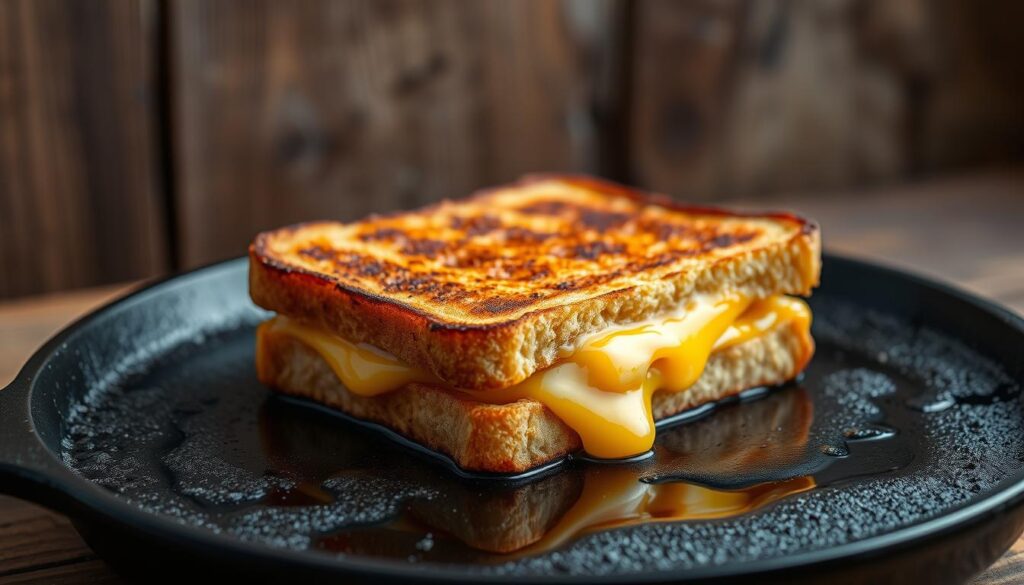
Also, cheese aging affects grilling. Younger cheeses melt more because they’re wetter. Older cheeses, being drier and firmer, grill better.
Essential Equipment for Perfect Cheese Grilling
Grilling cheese needs the right tools for great results. Whether indoors or outdoors, having the right gear makes a big difference. Let’s look at what you need for a top-notch outdoor grilled cheese experience.
Grill Type and Grates
The base of your cheese grilling setup is the grill type. For outdoor grilled cheese, a gas or charcoal grill is best. The grates should be thick and well-oiled to hold the cheese and heat evenly.
Spatulas and Tongs
Handling cheese on the grill needs care. Get high-quality, long-handled spatulas and tongs. They help you flip and move your grilling cheese without breaking it.
Thermometer
Keeping the right temperature is key for perfect melt. A digital thermometer or infrared gun is essential. It lets you check the grill’s temperature and cook your grilled cheese just right.
- Grill with sturdy, well-oiled grates
- Long-handled spatulas and tongs for easy handling
- Digital thermometer or infrared gun for temperature control
With the right tools, you’re set to make delicious grilled cheese at home or outdoors.
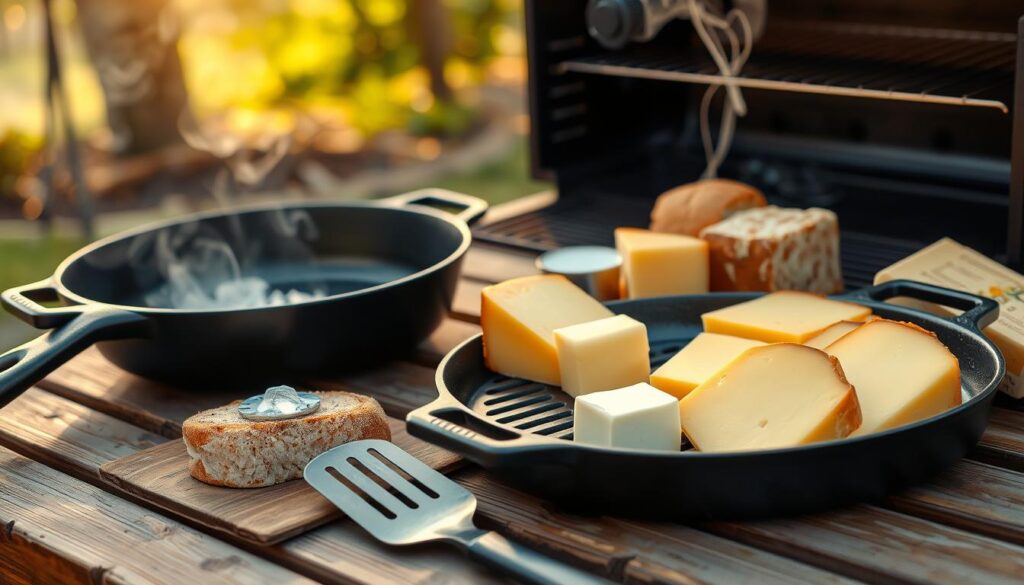
Top Cheese Varieties for Grilling
Not all cheeses are the same when it comes to grilled cheese. Some cheeses stand out more when grilled. Let’s look at the best cheeses for grilling and their delicious flavors.
Halloumi: The King of Grilling Cheese
Halloumi, a semi-hard cheese from Cyprus, is the top choice for grilled cheese. It has a high melting point and a firm texture. This means it stays in shape and doesn’t melt too much when grilled.
When grilled, Halloumi gets a tasty, caramelized crust. Inside, it stays soft and creamy. It’s a perfect combination of flavors and textures.
Provolone and Other Italian Options
Provolone, a versatile Italian cheese, is great for grilling. It has a medium-firm texture and a mild, nutty flavor. Other Italian cheeses like mozzarella and fontina also work well on the grill.
They offer a gooey, stretchy texture that everyone loves.
Greek and Mediterranean Choices
In the Mediterranean, you’ll find many cheeses perfect for grilling. Feta, a crumbly Greek cheese, gets a smoky flavor when grilled. Manouri, a semi-soft Greek cheese, also holds up well to heat.
Manchego, a firm sheep’s milk cheese from Spain, is another Mediterranean favorite. It sizzles beautifully on the grill.
For great grilled cheese, find the right mix of flavor, texture, and heat-resistance. Try different cheeses to find your favorites for your next grilled cheese.
Preparing Your Grill for Cheese
Mastering cheese grilling techniques outdoors begins with a clean grill. Whether you have a charcoal or gas grill, it’s key to clean and preheat it. This ensures your outdoor grilled cheese turns out just right.
Start by cleaning the grill grates well. Get rid of any old food, debris, or buildup. This step is important for even heat and to prevent cheese from sticking. Then, heat your grill to a medium-high temperature, around 375°F to 400°F (190°C to 205°C).
When the grill is hot, oil the grates to stop cheese from sticking. Use a high-heat oil like vegetable or canola oil. You can brush the grates with oil or use a grill brush.
Keep an eye on the grill’s temperature while cooking. The right heat is key for a perfect cheese melt and char. Use a grill thermometer to check the temperature and adjust as needed.
| Grill Preparation Step | Recommended Action |
|---|---|
| Clean the grill grates | Remove any leftover food, debris, or buildup |
| Preheat the grill | Reach a medium-high temperature of 375°F to 400°F (190°C to 205°C) |
| Oil the grates | Use a high-heat oil, such as vegetable or canola oil |
| Monitor the temperature | Use a reliable grill thermometer to maintain the optimal heat level |
By following these steps, you’ll make a great outdoor grilled cheese. It will have delicious, melted cheese and a crispy, golden-brown outside.
Step-by-Step Grilling Cheese Techniques
Grilling cheese is an art that needs skill and care. Whether you’re experienced or new, these tips will help you get great results. Follow these steps to grill cheese perfectly every time.
Temperature Control Methods
It’s key to keep the grill at the right temperature. Heat it to 350-400°F (175-205°C) for the best melting and browning. Use a digital thermometer to check the temperature and adjust it if needed.
Timing and Flipping Tips
- Begin by grilling the cheese for 2-3 minutes on each side, based on its thickness.
- Flip the cheese gently with a spatula to avoid breaking it.
- Watch the cheese closely, as it can burn quickly.
Preventing Sticking Issues
- Lightly oil the grill grates or spray with nonstick spray to prevent sticking.
- If the cheese sticks, use a metal spatula to gently lift it off.
- Don’t move the cheese too much to avoid sticking.
By using these cheese grilling tips and cheese grilling techniques, you’ll make perfect grilled cheese every time. Try different cheeses and flavors to find your favorites.
Indoor Grilling Methods for Cheese
If you can’t use an outdoor grill or prefer cooking indoors, there are great ways to make indoor grilled cheese. Try these cheese grilling techniques to get the same delicious taste as outdoor grilling, right in your kitchen.
Grill Pans: The Indoor Grilling Powerhouse
A cast-iron or non-stick grill pan is perfect for indoor grilled cheese. Heat the pan over medium-high, then add your cheese-filled bread. The pan’s ridges make grill marks, and the heat stays in for melting.
Broiler: Bringing the Heat Indoors
Your oven’s broiler is great for indoor grilled cheese. Place the cheese-topped bread on a baking sheet near the broiler. Watch it closely to avoid burning, and flip it halfway for even cooking.
Panini Press: The Multitasking Grilling Companion
A panini press is perfect for indoor grilled cheese lovers. It has two heating sides and a weighted lid for crispy bread and melted cheese without flipping. Try different cheeses to find your favorite indoor grilled cheese mix.
| Indoor Grilling Method | Key Advantages | Potential Drawbacks |
|---|---|---|
| Grill Pan | – Creates grill marks – Traps heat effectively | – Requires stovetop space – May need to flip slices |
| Broiler | – Intense, direct heat – No need to flip | – Requires close monitoring – Limited control over heat |
| Panini Press | – Evenly cooks both sides – Minimal hands-on time | – Takes up counter space – Limits cheese options |
Choose your indoor grilling method and experiment to find what works best for you. Mastering indoor grilled cheese can change your comfort food game, letting you enjoy it all year.
Marinades and Seasonings for Grilled Cheese
Make your grilled cheese sandwiches taste better with the right marinades and seasonings. You can use oil-based marinades or mix herbs and spices. This adds a fun twist to a classic comfort food.
Oil-Based Marinades
Try oil-based marinades to add more flavor to your cheese. Mix olive oil, garlic, and fresh herbs like rosemary or thyme. For a Mediterranean flavor, use olive oil, lemon juice, and oregano.
You can also use flavored oils like basil or chili-infused. This makes your grilled cheese recipes unique.
Herb and Spice Combinations
Use herbs and spices to make your grilled cheese better. Mix dried oregano, basil, and red pepper flakes for an Italian taste. Smoked paprika or cumin adds a smoky flavor.
Be creative with your spices. Find your own special seasoning blends.
Creative Flavor Enhancements
- Drizzle honey or maple syrup for a sweet and savory mix.
- Add grated parmesan or crumbled feta cheese for more flavor.
- Use chopped sun-dried tomatoes, olives, or roasted garlic for a Mediterranean twist.
There are many ways to make your grilled cheese sandwiches taste great. Try different marinades, seasonings, and flavors. Find your own special grilled cheese recipes.
Common Mistakes to Avoid When Grilling Cheese
Grilling cheese can be a fun and tasty experience. But, it’s easy to make mistakes that can mess up the dish. As a seasoned chef, I’ve seen it all – from cheese sticking to the grill to melting mishaps. Let’s look at the top tips for grilling cheese like a pro.
- Choosing the wrong cheese: Not all cheeses are good for grilling. Choose firm, high-moisture cheeses like halloumi, provolone, or mozzarella. They can handle the heat without melting too much.
- Neglecting temperature control: It’s key to control the temperature when grilling cheese. Keep your grill at 375°F to 400°F. This ensures even cooking and prevents burning.
- Overcooking the cheese: It’s easy to overcook the cheese and end up with a dry, rubbery texture. Watch the cheese closely and flip it often. This will help you get a perfect golden-brown sear.
- Forgetting to oil the grill: Without oil, your cheese might stick and tear when you flip it. Make sure to oil the grill grates well before adding your cheese.
- Neglecting to preheat the grill: A cold grill can make the cheese stick and cook unevenly. Always preheat your grill to the right temperature before adding your cheese.
By avoiding these common mistakes, you’ll be on your way to grilling cheese that’s perfectly melted, crispy, and full of flavor. Follow these tips, and your guests will love your grilled cheese creations.
Serving Suggestions and Pairings
Mastering grilled cheese is just the start. Now, think about how to serve and pair it for a great meal. Choose side dishes and drinks that make the flavors pop.
Complementary Side Dishes
For a complete meal, try these side dishes with your grilled cheese:
- Crisp, fresh salads with a light vinaigrette dressing
- Roasted or grilled vegetable medleys, such as asparagus, bell peppers, and zucchini
- Creamy tomato or butternut squash soup for dipping
- Tangy coleslaw or a classic potato salad
- Baked potato wedges or crispy, seasoned fries
Wine and Beverage Pairings
Find the perfect drink to go with your grilled cheese recipes. Here are some great choices:
- A crisp white wine like Pinot Grigio or Sauvignon Blanc pairs well with the grilled cheese toppings.
- Red wines like Merlot or Cabernet Sauvignon can also work well, cutting through the cheese’s creaminess.
- For a non-alcoholic option, a tangy lemonade or refreshing iced tea provides a refreshing contrast.
- Craft beers with notes of caramel or citrus can be a delightful pairing as well.
Feel free to try new flavor combinations to find your favorite pairings. The goal is to balance the richness of the grilled cheese with tastes and textures that complement it.
Creative Recipes Using Grilled Cheese
Grilled cheese sandwiches are a classic, but why not take your culinary skills to the next level? Explore a world of possibilities and unleash your inner chef. These creative ideas showcase the versatility of grilled cheese.
Grilled Cheese-Stuffed Meatballs
Imagine biting into a juicy meatball and finding oozing, melty grilled cheese inside. This fusion dish combines meatballs with grilled cheese for a unique and satisfying experience.
Grilled Cheese-Crusted Chicken Tenders
Give your chicken tenders a delightful twist by coating them in a crunchy grilled cheese crust. The result is a crispy, cheesy exterior that perfectly complements the tender, juicy chicken inside.
| Grilled Cheese-Stuffed Meatballs | Grilled Cheese-Crusted Chicken Tenders |
|---|---|
| Ingredients: | Ingredients: |
| 1 lb ground beef 1/2 cup breadcrumbs 1 egg 1/4 cup grated Parmesan 2 cloves garlic, minced Salt and pepper to taste Cubes of cheddar or mozzarella cheese | 1 lb chicken tenders 2 cups shredded cheddar cheese 1 cup breadcrumbs 2 eggs, beaten Salt and pepper to taste |
| Instructions: | Instructions: |
| Mix the ground beef, breadcrumbs, egg, Parmesan, garlic, salt, and pepper. Flatten a meatball-sized portion of the mixture and place a cube of cheese in the center. Gently close the meatball around the cheese and place on a baking sheet. Bake at 375°F until cooked through, about 20 minutes. | Preheat oven to 400°F. Dip the chicken tenders in the beaten eggs, then coat with the breadcrumb-cheese mixture. Arrange the coated tenders on a baking sheet and bake for 20-25 minutes, flipping halfway, until golden brown and cooked through. |
These are just a few examples of the endless possibilities when it comes to incorporating grilled cheese into creative recipes. Get ready to impress your family and friends with your culinary genius and a newfound love for grilled cheese-inspired dishes.
Storage and Leftover Tips
Mastering the art of grilling grilled cheese sandwiches is just the start. Learning how to store and reheat leftovers is key. This way, you can enjoy the same great flavors for days.
Proper Storage Methods
Storing your grilled cheese right is crucial. Wrap leftovers tightly in plastic wrap or foil to keep bread fresh. Store them in an airtight container or bag in the fridge for 3-4 days.
To keep them longer, freeze your grilled cheese. Wrap each sandwich in plastic or foil, then bag them up. Frozen, they last 2-3 months. Just thaw them in the fridge before reheating.
Reheating Techniques
Reheating your grilled cheese sandwiches is easy. Use a skillet or griddle over medium heat. Flip them a few times until cheese melts and bread crisps, about 2-3 minutes each side.
Reheat in the oven too. Preheat to 350°F, place on a baking sheet, and bake for 5-7 minutes, flipping halfway. For a quick microwave, heat for 30 seconds to 1 minute, watching to avoid soggy bread.
By using these cheese grilling tips for storage and reheating, you can enjoy your grilled cheese sandwiches for days. They’ll still taste like they were just grilled.
Conclusion
Grilling cheese is more than just a simple dish; it’s an art that brings endless joy to your meals. You’ve learned how to melt cheese perfectly and picked the right cheeses for grilling. Now, you’re ready to become a master of grilled cheese.
Whether you’re planning a barbecue, making appetizers, or just want a tasty grilled cheese, you’re all set. Your newfound skills will make your grilled cheese sandwiches even better. Don’t be afraid to try new cheeses and flavors to keep your dishes exciting.
The real fun of grilling cheese is in trying new things and seeing what works. Let your creativity shine and follow your taste buds on a journey of grilled cheese delights. Enjoy every bite!
FAQ
What are the best types of cheese for grilling?
Halloumi, Provolone, Paneer, Queso Fresco, and Haloumi are top choices for grilling. They melt well but keep their shape, even at high grill temperatures.
How do I prepare the grill for grilling cheese?
Clean the grates and heat the grill to medium-high. Oil the grates to prevent cheese from sticking. Ensure the grill is hot before adding cheese for a perfect sear.
What techniques should I use when grilling cheese?
Control the temperature and timing when grilling cheese. Grill over direct heat, flipping often for even cooking. Watch closely to avoid burning or sticking. Try basting with oil or marinades for extra flavor.
Can I grill cheese indoors?
Yes, you can grill cheese indoors with a grill pan, griddle, or broiler. Heat the surface well for a sear without overcooking. Adjust heat and watch the cheese closely for perfect melting and browning.
What are some common mistakes to avoid when grilling cheese?
Avoid using the wrong cheese, not preheating the grill, and overcrowding. Don’t flip too infrequently and avoid too much oil or marinade to prevent greasiness.
How can I enhance the flavor of my grilled cheese?
Use marinades or seasoning blends for extra flavor. Try oil-based marinades, herbs, spices, roasted garlic, or caramelized onions to enhance your grilled cheese.
What are some good serving suggestions and pairings for grilled cheese?
Grilled cheese goes well with salads, roasted veggies, or tomato soup. Pair it with white wine, lager, or a milkshake. Add toppings like bacon, caramelized onions, or balsamic glaze for extra taste.

